Real Estate LLC Ownership Structures

Ownership structures for real estate investments are as varied as the properties themselves. The limited liability company (LLC) form of organization is increasingly popular for its flexibility and efficiency.
This series of company organization charts shows the evolution of a single property investment into an entire portfolio using LLCs as the ownership vehicle.
Single Owner
Individuals can and do own real estate directly for investment. Lawyers and financial advisors often recommend that investors use a legal entity to own the real estate to limit the liability of the individual owner and to achieve tax objectives.
The organization chart for an individual owning real estate is simple.
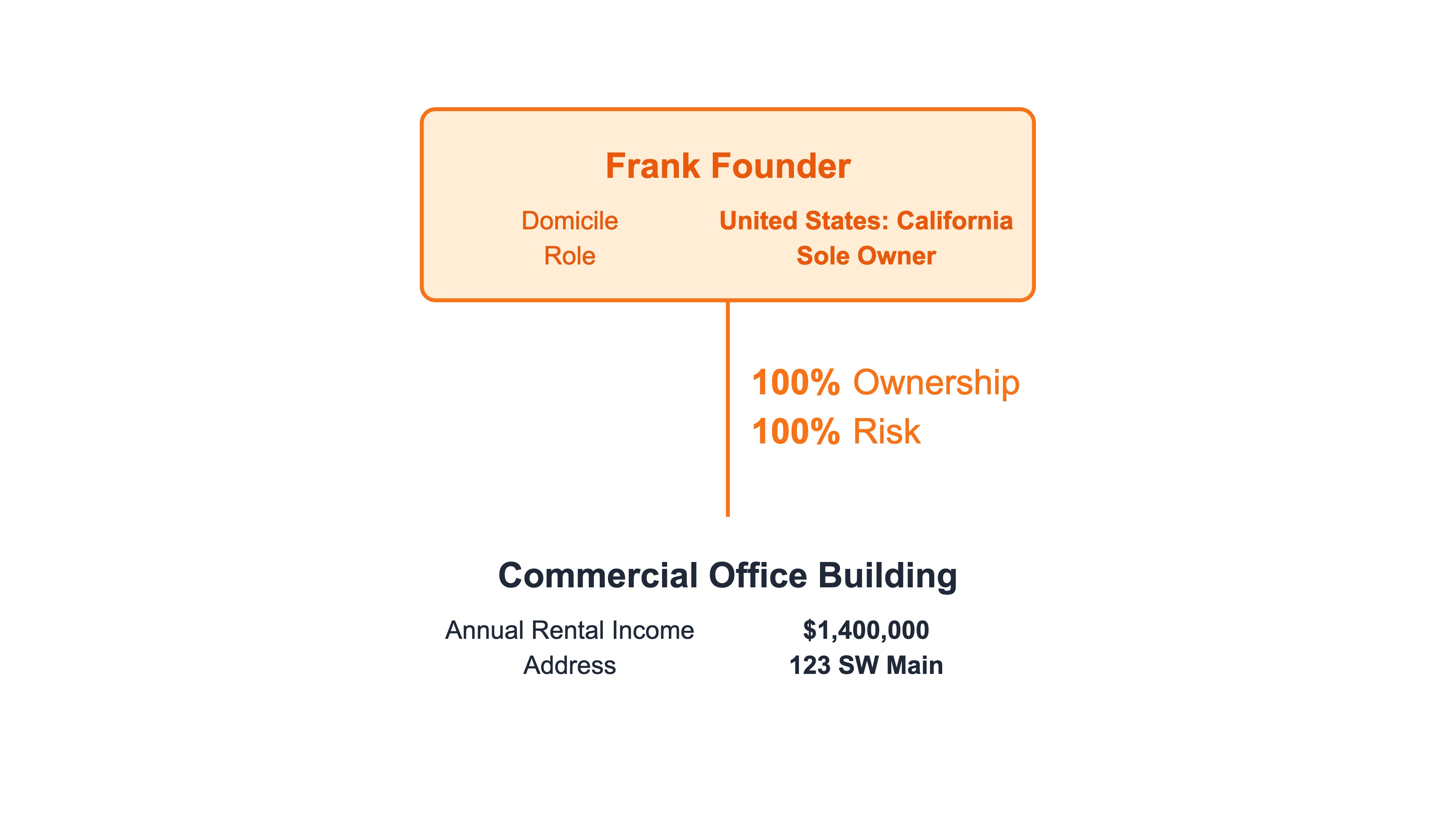
The ownership structure chart shows that Frank Founder owns 100% of a commercial building along with 100% of the risk.
Joint Ownership
Joint ownership of real estate means that two or more people own the property asset directly. There are several options in common law jurisdictions. Tenancy-in-common and joint tenancy are the most prevalent structures. While these structures have benefits, joint ownership of investment real estate can mean that each owner bears 100% of the risk and only their share of the benefits.
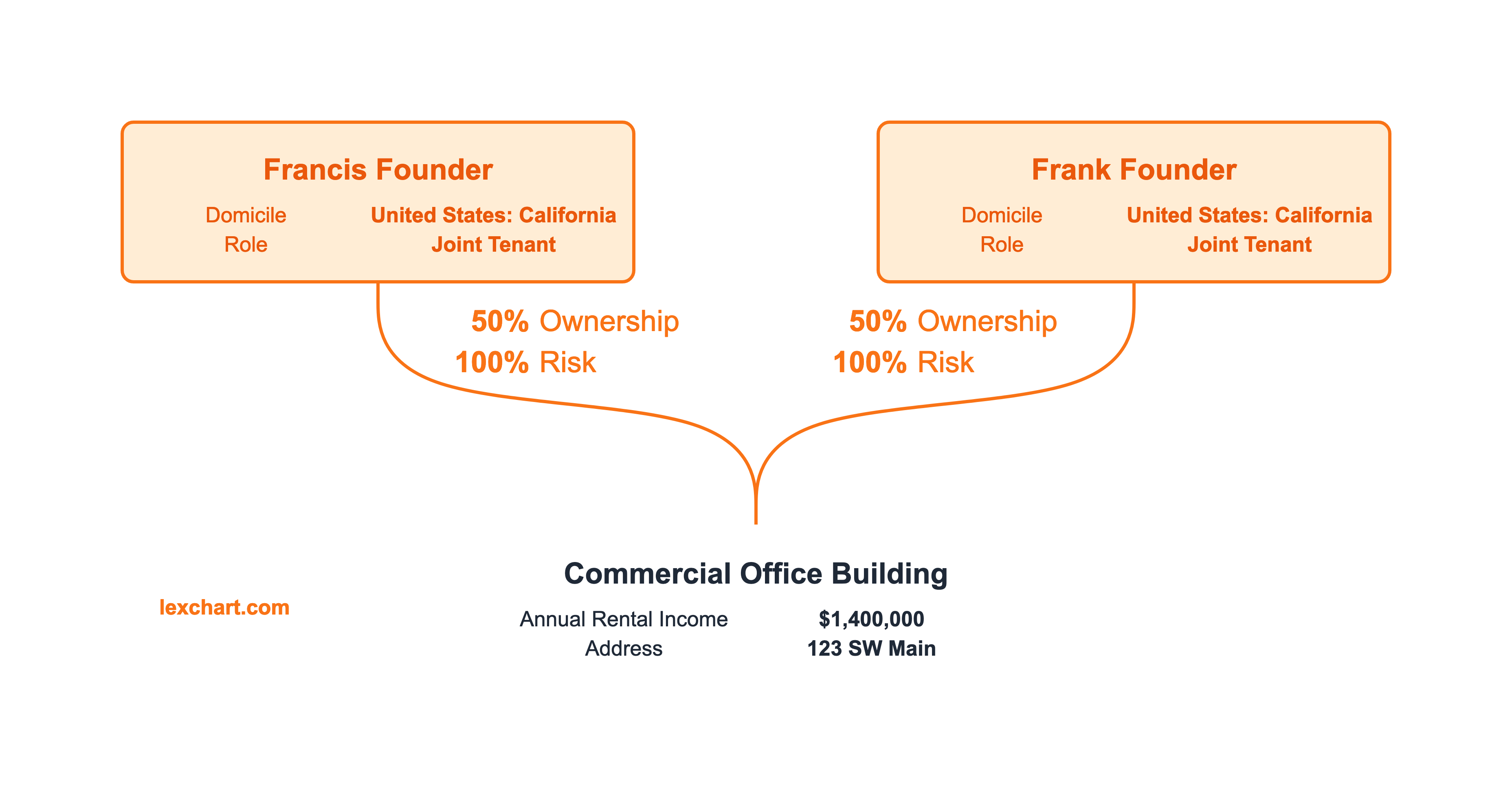
This real estate investment structure chart shows the division of benefits and the sharing of risk.
Simple LLC
To manage risk from direct real estate ownership, investors form a limited liability company to own the property. An LLC for real estate investment:
- insulates investors from liability arising from the property,
- provides flexibility for allocating profits and losses,
- simplifies bringing on additional investors, and
- offers tax efficient ownership.
In this company structure chart, the investors create Real Property Holding, LLC to own a commercial office building. The LLC bears 100% of the risk and owns 100% of the building.
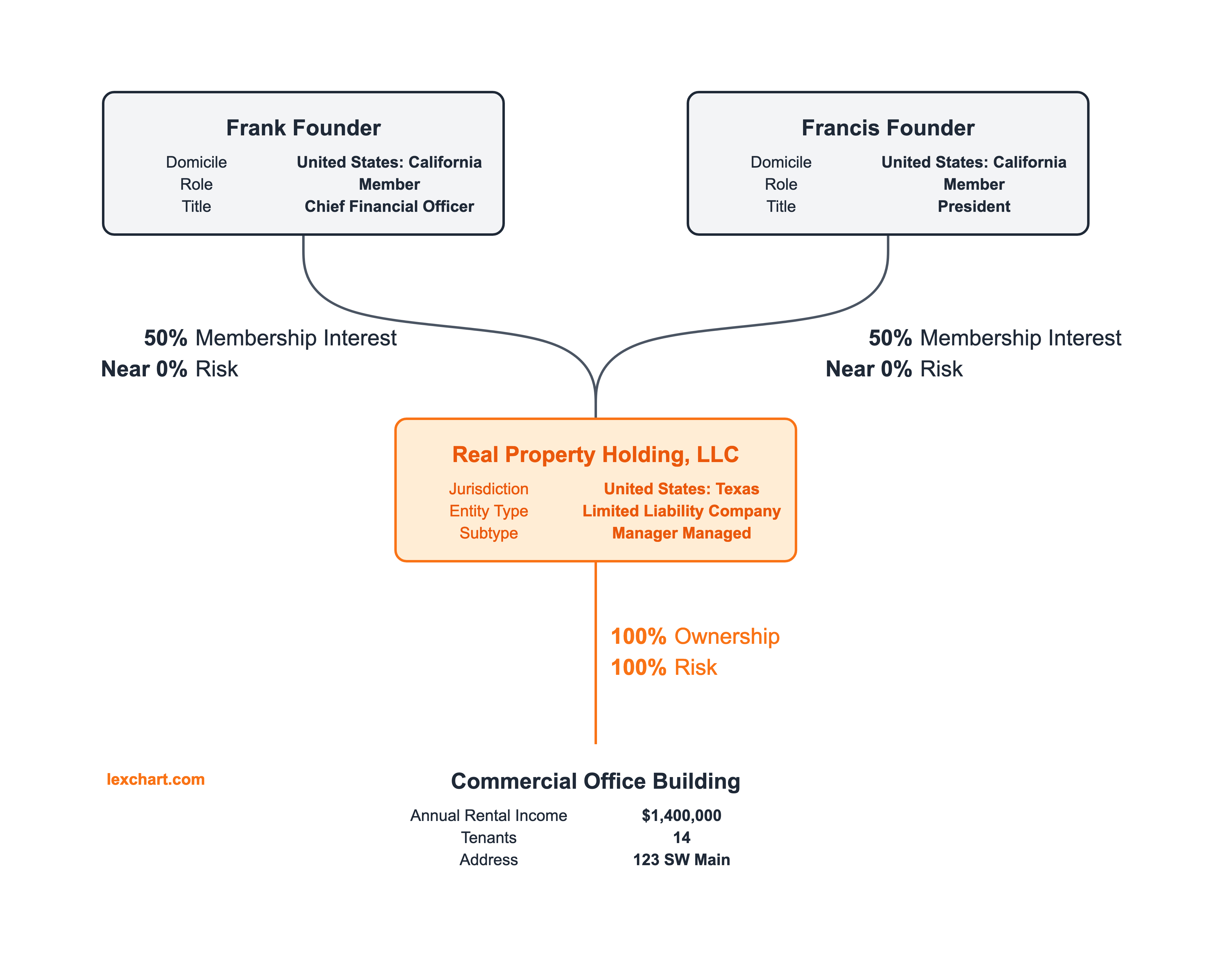
The profits (and losses) from the building flow through the LLC to the investors. They share those benefits but have little risk. No legal structure eliminates risk to the investor, but the general rule is that the LLC shields them from liability. This principle is called the corporate veil and getting through the shield is called "piercing the corporate veil," even though an LLC is not a corporation.
LLC with Investors
The limited liability company as a real estate investment vehicle provides a flexible capital structure without changing the ownership of the underlying property.
In this organizational chart, the initial investors in Real Property Holding, LLC bring on Outside Investments, Inc. as a member in the LLC.
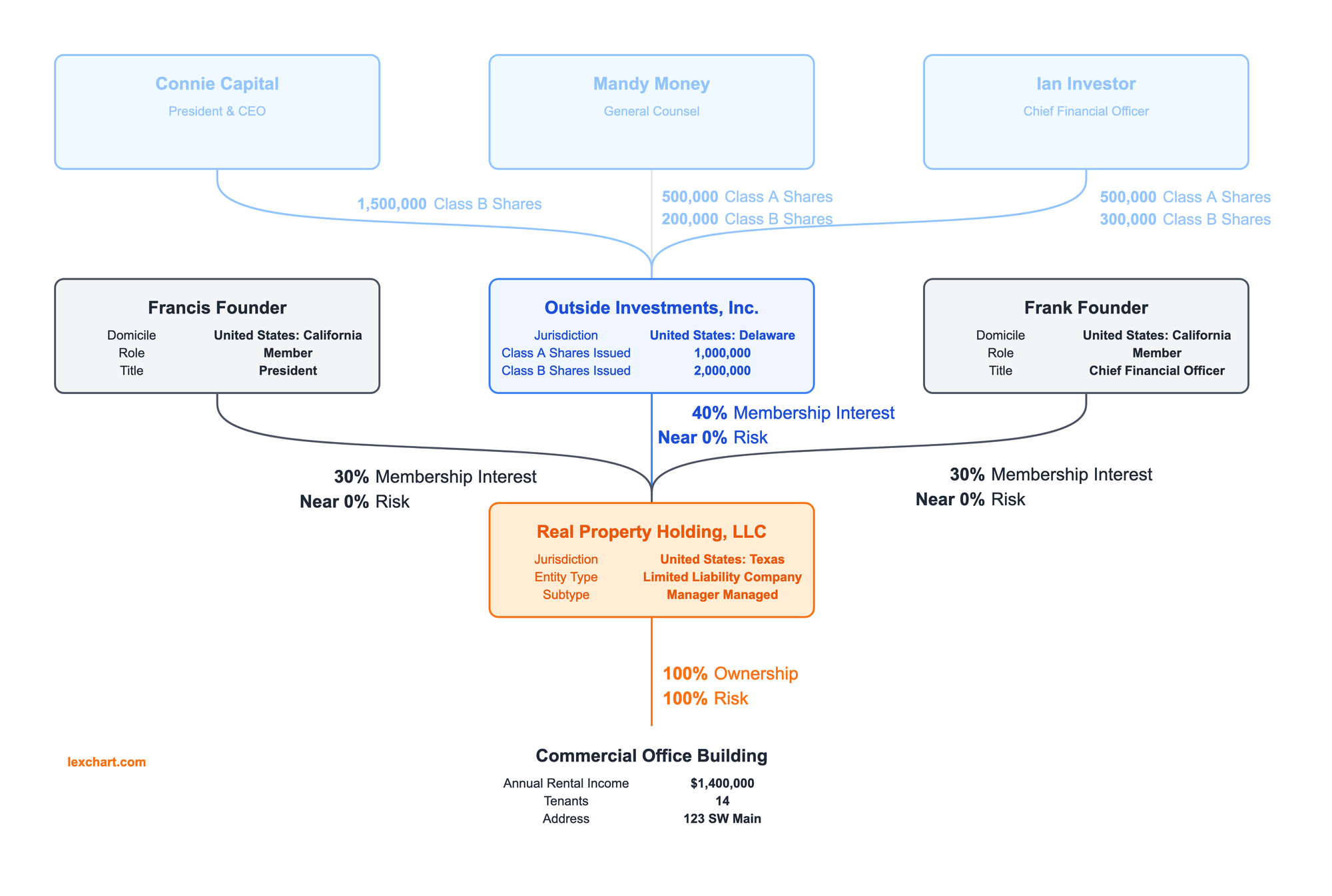
All three members have little risk from liabilities related to the property. They allocate their interests in the LLC 40%-30%-30%. The LLC retains 100% ownership in the property and 100% of the risk despite the changes in its own structure.
Multiple LLCs
The idea of creating a limited liability company for a single property scales for any number of properties.
In this company structure chart, the same group of investors forms a new LLC to acquire a multifamily property. They form Multifamily Holding, LLC.
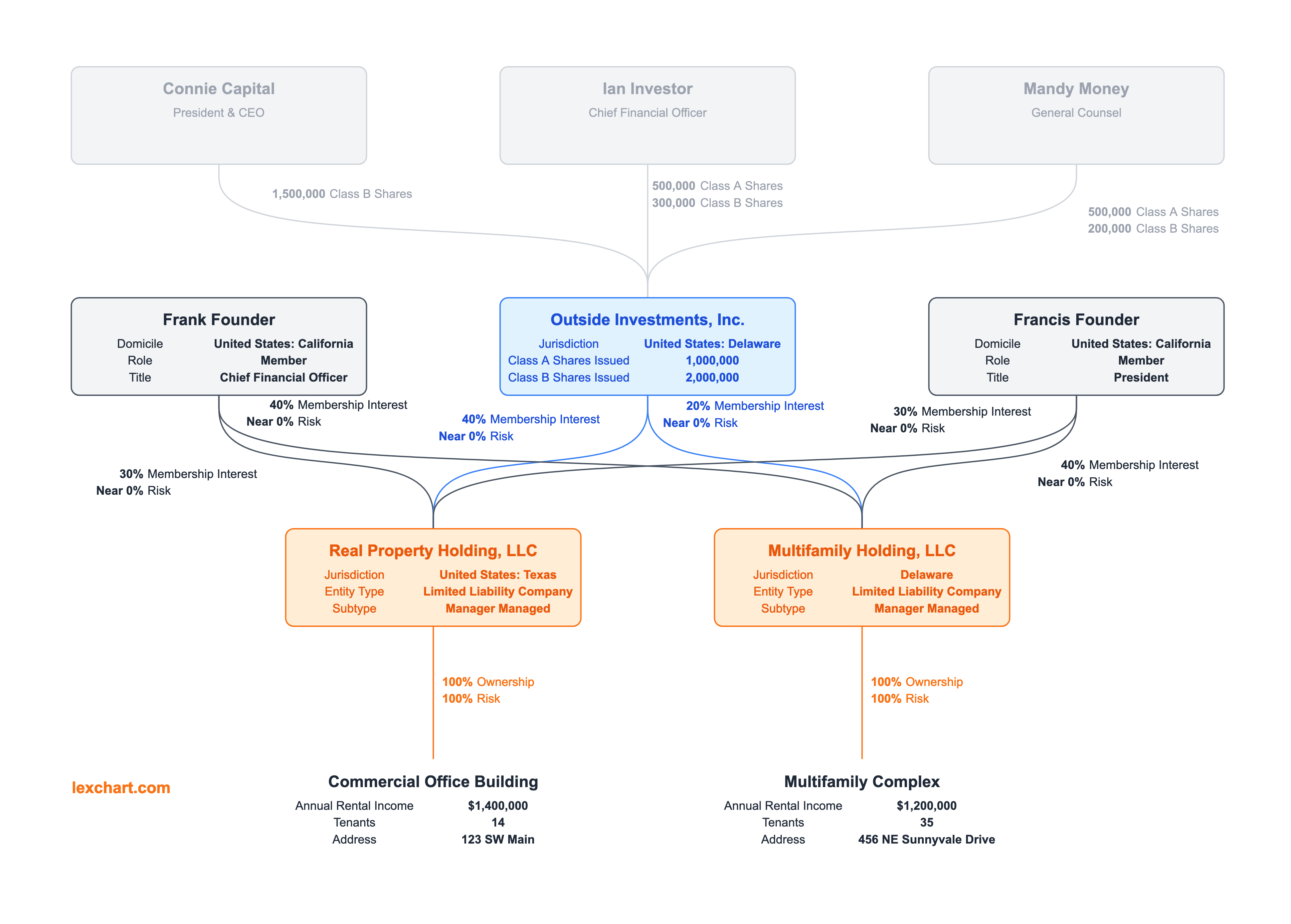
Notice, however, that the membership interest allocation differs from Real Property Holding, LLC. That is a choice available with each new LLC.
LLC Holding Company
When the investor group decides to acquire a portfolio of real estate investments, creating a new LLC for each property and negotiating the ownership structure of each LLC is cumbersome. A real estate investment holding company structured as an LLC can simplify organization setup and operations.
In this company structure chart, Real Estate Holdings Parent, LLC serves as the umbrella entity. That parent company own 100% of each LLC that owns a property. The real estate portfolio now consists of four properties, each owned by an LLC.
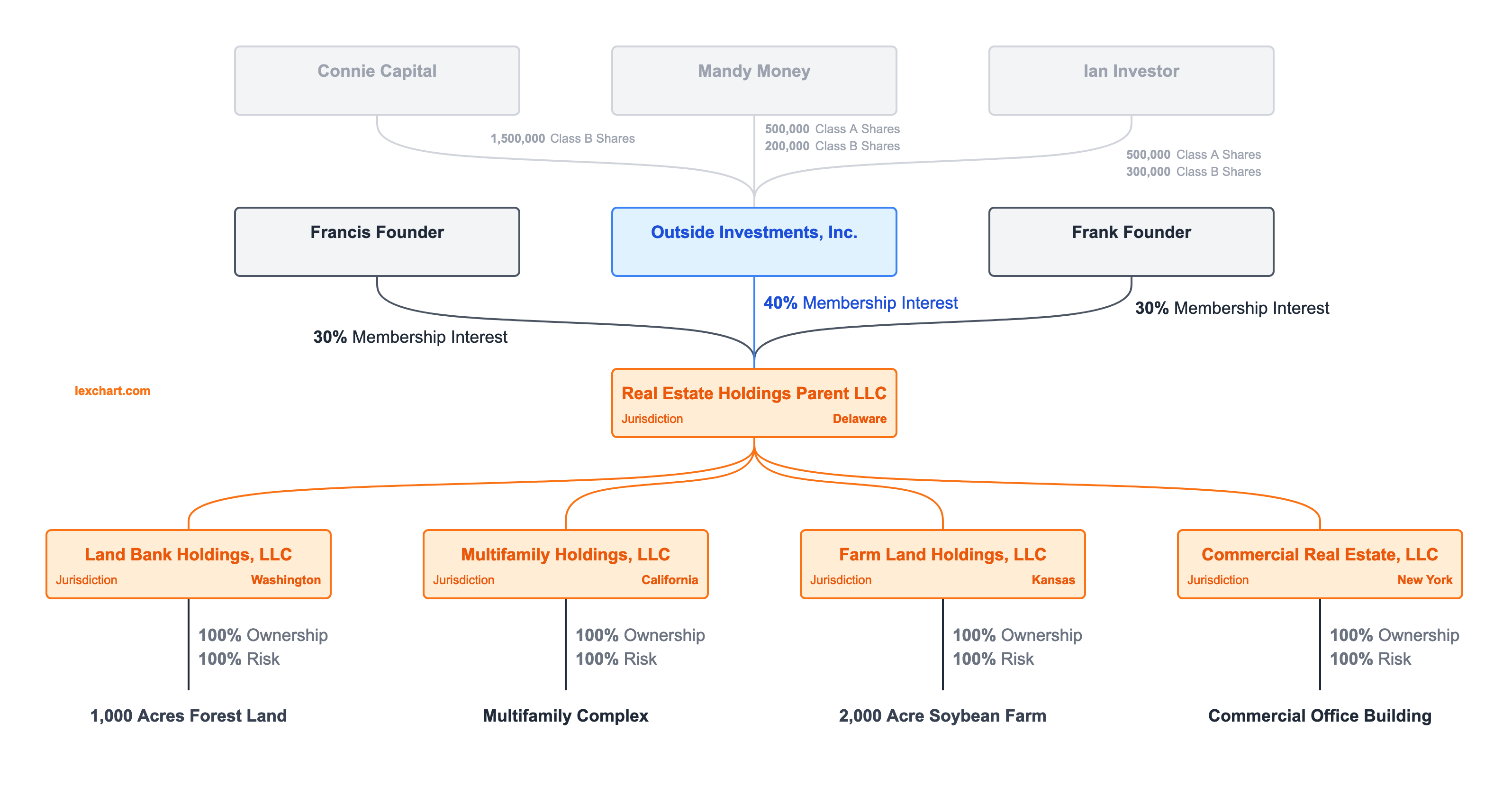
This approach introduces an ownership layer to the organization chart, yet simplifies the structure in several ways:
- The investors agree on the allocation of membership interests and responsibilities one time, at the holding company level,
- The tax benefits flow through each layer, and
- There is an addition layer shielding the investors from liability.
The investors can now acquire additional properties with a repeatable structure.
Series LLC
An investor group could form a Series LLC as the parent, or umbrella, holding company for all the properties. Not all states permit Series LLC structures.
A Series LLC allows the members to form a single LLC while separating assets into different "Series". In this company structure chart, there is a series for each property investment.
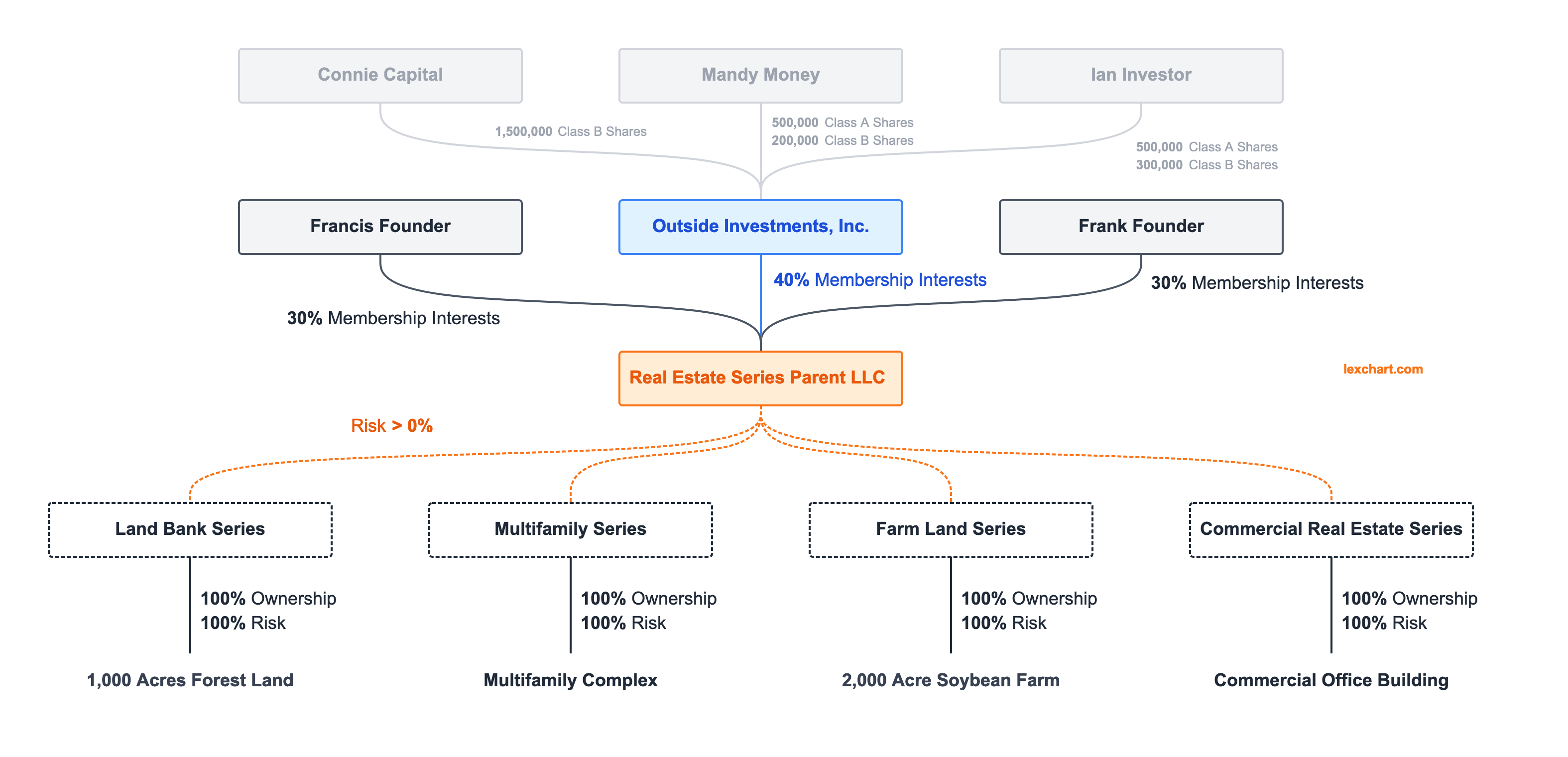
Structured properly a Series LLC insulates the assets of each Series from the liabilities of the other Series.
To illustrate, here is a contrasting limited liability company which owns multiple properties directly.
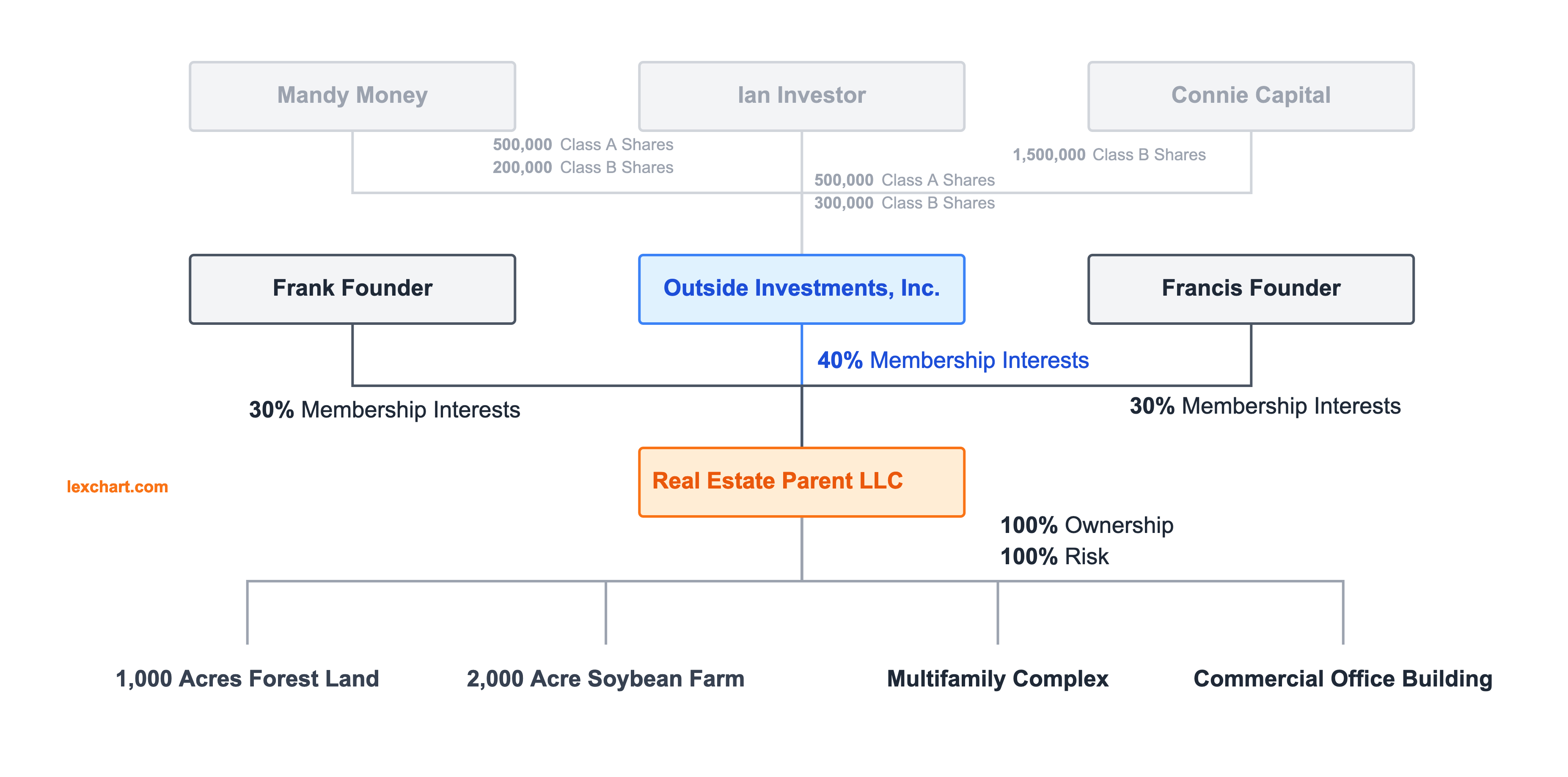
If a calamity strikes the multifamily property, injuring many of the tenants, the liability could exceed the value of the property.
In the second organization chart, the plaintiffs could reach the farmland, commercial building, and forest land because they are all assets of the LLC.
In the Series LLC chart, however, the plaintiffs could not reach the assets of the other Series (farmland, commercial building, and forest land), because they are isolated in a Series.
Conclusion
Limited liability companies used for real estate investments provide several benefits:
- Flexible ownership structures,
- Pass through tax status, and
- Legal risk management with the corporate veil.
For large or small real estate projects, a company organization chart clarifies management responsibilities and legal obligations.

